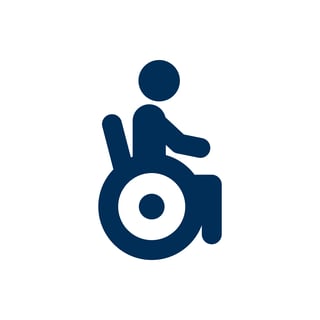Ramping Up Accessibility With Low-Floor School Buses
published on February 23, 2018 by Sonia Mastros
special needs students, special needs student transportation, transport special needs students, Low-Floor School Buses
 School bus accessibility is a major concern among school districts who find themselves with one or more mobility-impaired students. Legally, in nearly all cases, they are required to provide necessary accommodations for riding the bus. But, those accommodations can be extremely expensive to implement, particularly if a wheelchair lift needs to be installed.
School bus accessibility is a major concern among school districts who find themselves with one or more mobility-impaired students. Legally, in nearly all cases, they are required to provide necessary accommodations for riding the bus. But, those accommodations can be extremely expensive to implement, particularly if a wheelchair lift needs to be installed.
Worse, once that student moves or graduates, it could be years before the lift is ever used again, making it a massive sunk cost with no foreseeable returns.
It's little surprise, then, that school districts are seeking alternatives with either cheaper accessibility solutions or ones which have enough general-purpose use that it doesn't feel like modifying the bus solely to suit the needs of one student. Both these targets can be hit with one of the latest ideas in bus accessibility: low-floor school buses!
Low-Floor School Buses Make a Lot of Sense
Low-floor buses in general are nothing new; they've been around since the 1960s. However, they've been slow in coming to school buses. Now they're here, and they offer substantial benefits.
The biggest design change is the most obvious: the bus has been lowered substantially and the passenger area is much closer to the ground. Generally, it only takes a single small step up to move from the ground to the bus. However, these buses are also outfitted with side-loading doors featuring a simple ramp, which can be extended for students who lack even that much mobility.
These buses are also generally available in multiple floor plans, depending on how many seats the buyer wants carved out for wheelchair use. There are also a couple smaller benefits for wheelchair riders: because the wheelchair spots are centrally-located, the ride is a bit smoother. Also, wheelchair students can move themselves on and off the bus - this increases their sense of independence, while reducing your need to manually move them around.
Plus, most designs have a bit more headroom than standard buses as well. They feel more open, they're better for taller riders, drivers, or monitors, and they often have extra storage space.
Are there drawbacks to low-floor school buses? Yes, but only what one would expect from a bus that's lower to the ground. The buses will have trouble on rough or uneven terrain, and have a higher chance of bottoming out. They would only be suitable for driving on well-paved city roads.
Aside from those in rural or mountainous situations, these buses can substantially improve accessibility in a way that offers more benefits for more riders.
How does your school handle unusual mobility challenges? Do these low-floor school buses seem like a reasonable solution? Let's discuss it in the comments below!



